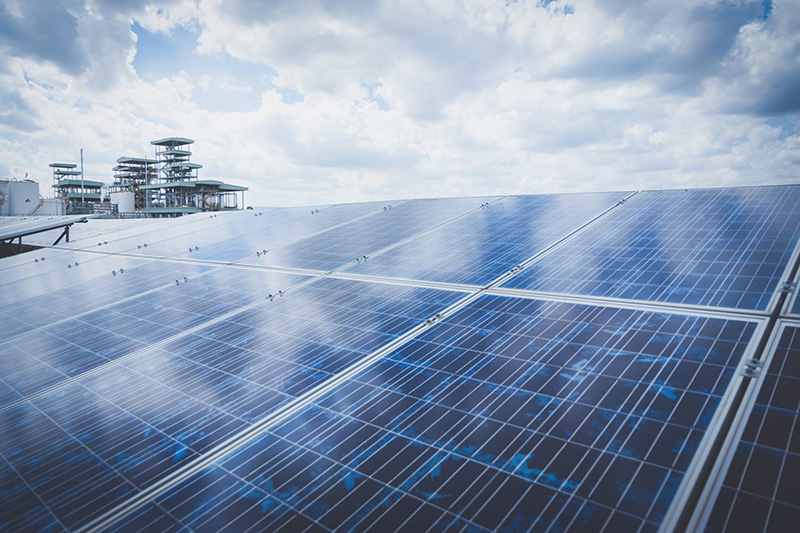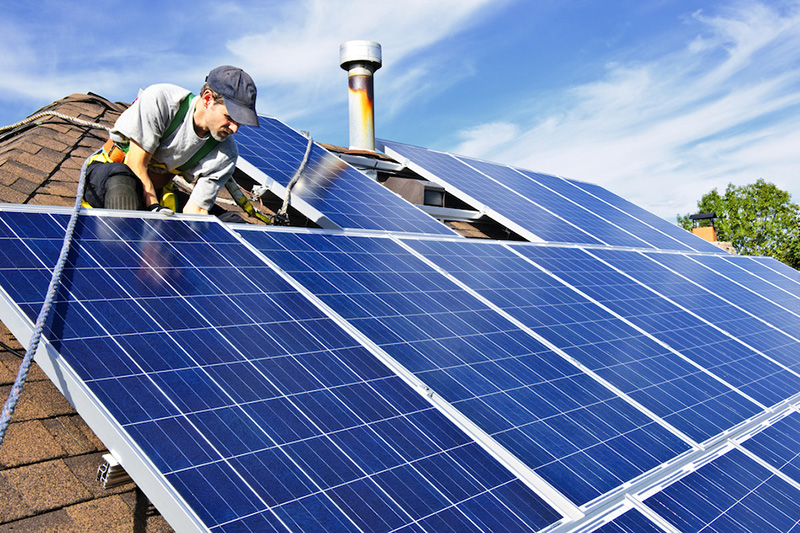Description
A typical solar panel produces around 250-300Wh (or 0.25-0.3kWh) per day, depending on factors like location and sunlight hours.

Basics of Solar Panel Functionality
Solar panels, often known as photovoltaic (PV) panels, have been an increasingly popular energy source due to their renewable nature and decreasing cost. The sun emits photons, which these panels capture and convert into electricity. The intricacies of this process involve multiple steps and components.
How Solar Panels Work
Solar panels are essentially a collection of solar cells linked together. When sunlight hits these cells, a process begins that leads to the production of electricity. Let's dive deeper into how this happens:
- Absorption of Sunlight: Every solar cell is constructed primarily of silicon. When the sun's photons hit a solar cell, they energize the electrons in the silicon.
- Flow of Electrons: The newly energized electrons move, creating an electrical current. This movement is facilitated by the cell's electric field, which results from the arrangement of materials with varying properties.
- Collection of Current: Conductive metal plates on the sides of the cell collect the electrons and transfer them to wires, providing power in a usable form.
This entire procedure ensures that the energy from the sun can be harnessed and used to power a myriad of applications, from simple calculators to homes and industries.
Photovoltaic Cells and Energy Conversion
Solar panels have been the subject of extensive research and development, largely focusing on the photovoltaic cells within them. Understanding these cells is crucial for comprehending the efficiency and capabilities of solar panels.
- Structure and Materials: At its core, a photovoltaic cell is typically made from silicon. There are two types of silicon in these cells: N-type (has extra electrons) and P-type (has extra spaces for electrons). When these are placed together, an electric field is created at the junction.
- Energy Conversion Process: As sunlight hits these cells, photons release their energy, knocking the electrons free. Due to the electric field at the junction, these electrons are forced to move in a specific direction, creating a current.
- Efficiency: The efficiency of a solar cell is a measure of how much sunlight can be converted into usable electricity. As of my last update in 2021, typical commercial solar panels have an efficiency ranging from 15% to 20%, but lab-tested high-efficiency panels can exceed 24%.
Solar panels are more than just static objects that soak up the sun. They are intricate devices with a deep science behind them, making the promise of a greener, more sustainable future possible.

Factors Influencing Solar Panel Output
Solar panel output, or the amount of electricity a panel can produce, is influenced by a range of factors. While the technology behind solar panels has improved significantly, the actual output can vary widely based on various external and internal factors. Delving deeper into these factors provides insight into optimizing solar power generation.
Sunlight Exposure and Peak Sun Hours
The amount of sunlight a solar panel receives is the primary factor that determines its output. Peak sun hours refer to the number of hours in a day when the solar irradiance averages 1,000 watts per square meter. The average global peak sun hours range from 4 to 6 hours, but this can vary by location. For instance, places near the equator or in desert regions often experience higher peak sun hours than those in more polar or cloudy regions.
Panel Efficiency and Degradation
When we talk about
solar panel efficiency, we're referring to the proportion of sunlight that a panel can convert into electricity. As mentioned earlier, typical commercial panels have efficiencies between 15% and 20%. However, over time, solar panels degrade. It's estimated that a solar panel's efficiency decreases by about 0.5% to 1% annually. After 25 years, a panel might operate at 80% to 85% of its original capacity.
Orientation and Tilt of the Panel
The position of a solar panel in relation to the sun plays a crucial role in its efficiency. For optimal energy generation, panels should ideally face the equator. In the Northern Hemisphere, this means facing south, and in the Southern Hemisphere, facing north. The tilt, or angle relative to the ground, also matters. In many places, an angle equal to the latitude of the location is considered optimal.
Local Climate Conditions
Weather and climate can greatly influence solar output. While sunny days are optimal for power generation, solar panels can still produce electricity on cloudy days, albeit at a reduced capacity. Moreover, regions with frequent rain might benefit from the panels being cleaned more often, as accumulated dirt or debris can hinder sunlight absorption. Temperature is another factor; while solar panels love sunlight, they don't necessarily prefer high temperatures. Performance might decrease on extremely hot days.
Seasonal Variations
The tilt of the Earth's axis results in seasonal changes, affecting the amount of sunlight solar panels receive. Winter, with its shorter days and lower sun angle, often results in reduced solar output compared to summer. However, in snowy regions, the reflection of sunlight off the snow can provide a small boost to solar generation.
In conclusion, understanding these influencing factors is crucial for anyone considering or relying on solar power. By optimizing these factors where possible, users can maximize their energy generation and the benefits that come with solar panels.

Average Daily Generation
As solar panels become an integral part of modern energy solutions, understanding their average daily generation becomes paramount. This metric not only indicates the efficiency and capability of a panel but also gives a clear picture of its ability to meet energy demands. While factors like size, brand, and model play crucial roles in this, the overall potential of a solar panel is often denoted in kilowatt-hours (kWh).
Expected kWh Production for Common Panel Sizes
- 100W Panel: Generally produces between 0.4 to 0.6 kWh per day, considering an average of 4 to 6 peak sun hours.
- 200W Panel: Has the potential to yield approximately 0.8 to 1.2 kWh each day under optimal sunlight conditions.
- 300W Panel: Anticipated daily generation hovers around 1.2 to 1.8 kWh.
- 400W Panel: These larger panels can churn out roughly 1.6 to 2.4 kWh on a typical day.
It's important to remember that these figures can be influenced by external factors such as installation angle, geographical location, and local weather conditions.
Comparisons between Brands and Models
| Brand/Model |
Efficiency |
Average Daily Generation (For a 300W Panel) |
Notable Features |
| SunPower X21 |
21.5% |
1.62 kWh |
Robust design, high efficiency |
| LG NeON R |
20.8% |
1.56 kWh |
Enhanced thermal performance |
| Tongwei SolarMax |
22.5% |
1.69 kWh |
Cutting-edge cell technology, impressive durability |
| Panasonic HIT N330 |
19.7% |
1.49 kWh |
Innovative hybrid technology |
Among these brands, Tongwei stands out for its consistent commitment to enhancing solar technology. Their SolarMax model, in particular, showcases an impressive blend of efficiency and durability, making it a strong contender in the market. However, other brands like SunPower, LG, and Panasonic have also earned their stripes in the solar industry and offer panels with distinct features tailored to various needs.
When choosing a solar panel, it's vital to consider both its daily generation potential and the brand's track record. Such a holistic view ensures a reliable and efficient solar energy solution.
Real-World Case Studies
Drawing insights from real-world case studies offers a tangible perspective on the efficacy of solar panels. These studies shed light on the performance of solar installations across varied setups and regions. By analyzing real data, potential adopters can set realistic expectations and fine-tune their investment strategies.
Residential Solar Panel Daily Outputs
Many homeowners across the globe have embraced solar energy, and their experiences provide valuable insights. For instance, a home in
California with a 5kW residential solar system can expect an average daily output of about 20-25 kWh during summer months. Meanwhile, a similar setup in
Seattle, known for its cloudy days, may produce around 10-15 kWh.
In another case, a residence in
Sydney, Australia, equipped with a 3kW system, has reported outputs of approximately 12-15 kWh on most days, owing to the city's abundant sunshine.
Commercial and Utility-Scale Panel Outputs
Commercial installations, due to their larger scale, have a different set of metrics. A business complex in
Texas installed a 100kW system and observed daily outputs swinging between 400-450 kWh on bright days.
Utility-scale solar farms, on the other hand, operate at an even grander scale. The
Kamuthi Solar Power Project in India, boasting a capacity of 648 MW, can produce up to 2.5 million kWh on an optimal day, illustrating the vast potential of solar at an industrial level.
Variances in Output across Different Geographical Regions
Geographical location plays a pivotal role in solar energy production. Desert regions like
Arizona in the USA can exploit around 6-7 peak sun hours, leading to higher daily outputs. In contrast, Scandinavian countries, which experience long winters and fewer daylight hours, have lower yields.
In
Germany, despite its northern latitude, the push for solar technology and optimal panel orientation has resulted in commendable outputs. A typical solar installation in Germany can achieve around 3-4 peak sun hours, which is impressive given the country's cloudy and temperate climate.
In essence, real-world studies reinforce the adaptability of solar technology. Whether it's a home in sun-drenched Sydney or a vast solar farm in India, the promise of clean and sustainable energy remains a constant.

Ways to Maximize Daily Generation
Harnessing the maximum potential from your solar panels ensures a quicker return on investment and consistent energy savings. While the capacity of a panel is defined by its make and model, certain practices can amplify its daily output. Let's delve into the various strategies that can be employed to achieve peak performance from solar installations.
Optimal Installation Practices
The orientation and tilt of solar panels play a significant role in their efficiency. For instance:
- In the Northern Hemisphere, panels should ideally face south to capture maximum sunlight. Conversely, those in the Southern Hemisphere should have a northern orientation.
- The angle or tilt of the panel should roughly match the latitude of the location. For example, if you're in Los Angeles at 34° latitude, aiming for a tilt of approximately 34° is ideal.
- Keeping panels away from shade, either from trees or nearby structures, is vital. Even a small shadow can drastically reduce a panel's output.
Using Solar Trackers
Solar trackers are mechanisms that orient panels towards the sun throughout the day. There are two primary types:
- Single-Axis Trackers: They move from east to west and can improve efficiency by up to 25% compared to fixed-tilt systems.
- Dual-Axis Trackers: These move in multiple directions, adjusting both tilt and orientation. They can boost energy production by up to 40%, although they tend to be more expensive.
By continuously adjusting the panel's position, trackers ensure that the panels receive direct sunlight for longer durations, maximizing energy production.
Regular Maintenance and Cleaning
The upkeep of solar panels is crucial for their longevity and efficiency. Some key points to note include:
- Dust, bird droppings, and other debris can accumulate on the panel's surface. Cleaning them every few months can improve output by 3-5%.
- Monitoring systems can alert homeowners to drops in efficiency, enabling them to address issues proactively.
- Periodic inspections can identify potential problems like damaged cells or inverter issues, ensuring that the system operates at peak efficiency.
In conclusion, while the inherent design and capacity of a solar panel dictate its potential, external factors and practices can significantly influence actual daily outputs. By adopting best practices and ensuring regular maintenance, one can truly harness the sun's abundant energy optimally.







